Shopping for a motorcycle enthusiast can be tricky, especially if you’re not familiar with the gear and gadgets that make riding more enjoyable. Whether it’s the thrill of the ride, the joy of the open road, or the love for motorcycles themselves, finding the perfect Christmas gift can feel overwhelming. Here is a guide of […]
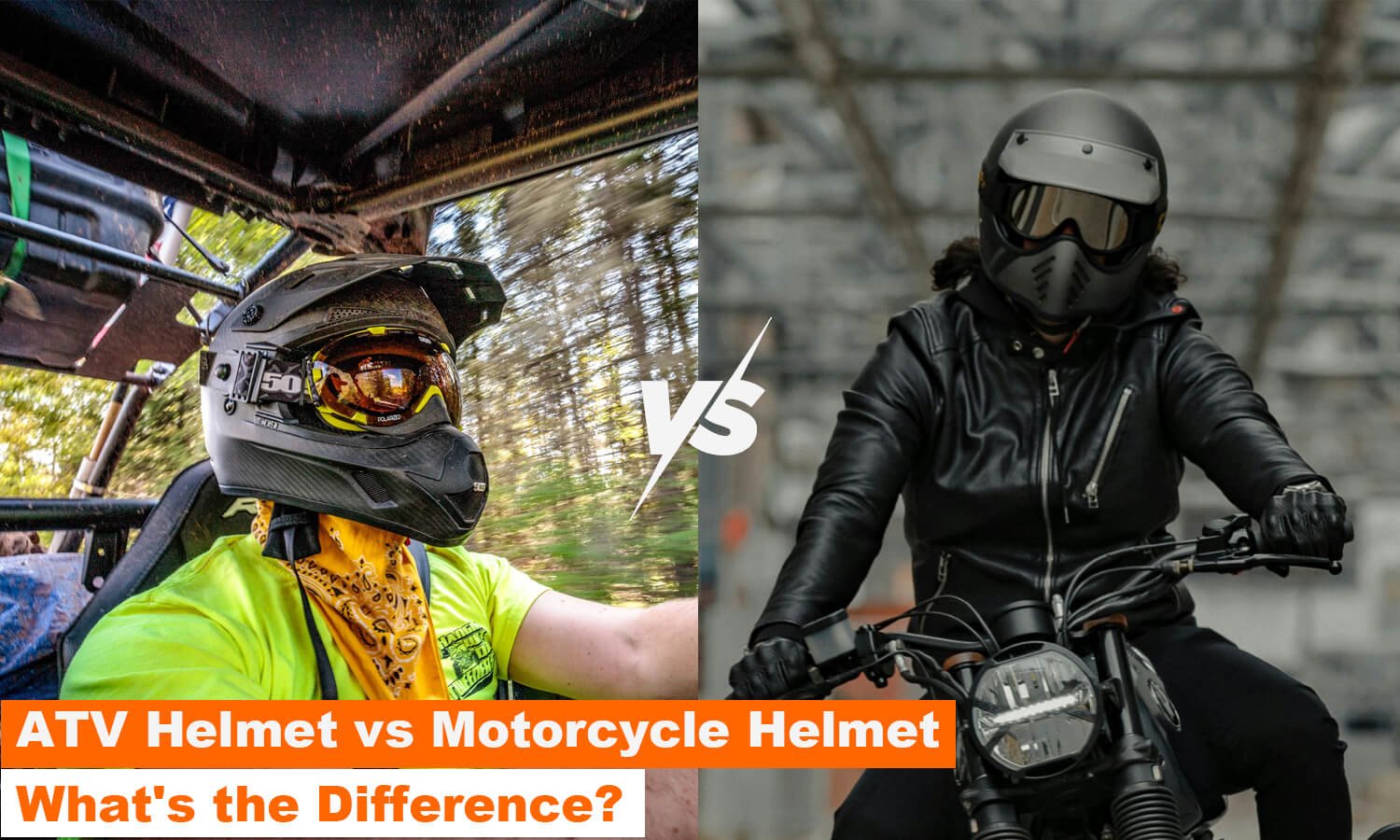
ATV Helmet vs Motorcycle Helmet: What's the Difference?
ATV Helmet vs Motorcycle Helmet: What's the Difference?
When it comes to protecting yourself while riding, the importance of a helmet cannot be overstated. Both ATV helmets and motorcycle helmets serve the function of safeguarding your head. Despite their similar purpose, they also have some differences.
They are designed differently to meet the specific demands of their respective vehicles.
This guide will lead you to explore their differences and similarities. Also, we will introduce the key considerations when choosing between ATV and motorcycle helmets.
Table of Contents
Understanding the Basics
ATV Helmets
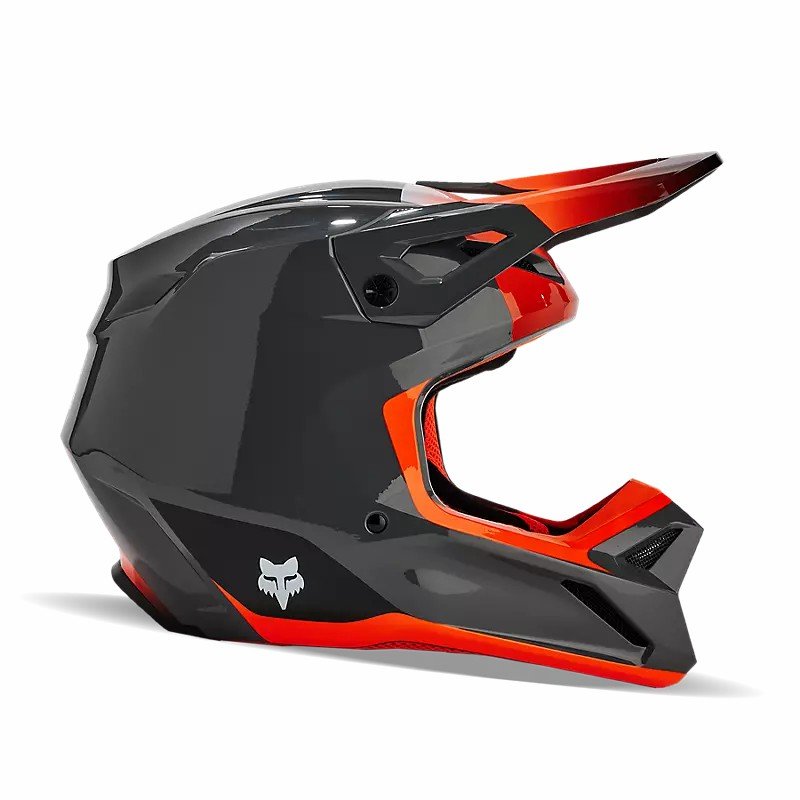
ATV Helmet - Fox Racing V1
ATV(All-Terrain Vehicle) helmets are specifically designed for off-road activities. So, many people also call them off-road helmets or dirt road helmets.
They are built to withstand the unique challenges of riding on rough terrains. These often include dirt, mud, and debris.
ATV helmets typically have the following features:
- Safety Standards: ATV helmets require DOT, ECE, or Snell for assurance of safety.
- Ventilation System: They have multiple vents to ensure proper airflow and keep the rider cool.
- Comfort Padding: The liners are removable and washable for comfort and hygiene.
- Visor or Face Shield: With scratch-resistant and UV-protected visors, they provide clear vision.
- Weight: ATV helmets use lightweight materials to reduce fatigue during long rides.
- Size and Fit: There are adjustable straps and different ATV helmet sizes to ensure a snug fit.
- Material: Durable outer shell materials like polycarbonate or fiberglass for impact resistance.
- Noise Reduction: The design feature of the ATV helmet is to minimize wind noise during rides.
- Goggle Compatibility: There is space and design to accommodate goggles comfortably.
- Communication System Compatibility: Some ATV helmets have built-in or compatible mounts for communication devices.
Shop ATV Helmet Communication System
Motorcycle Helmets
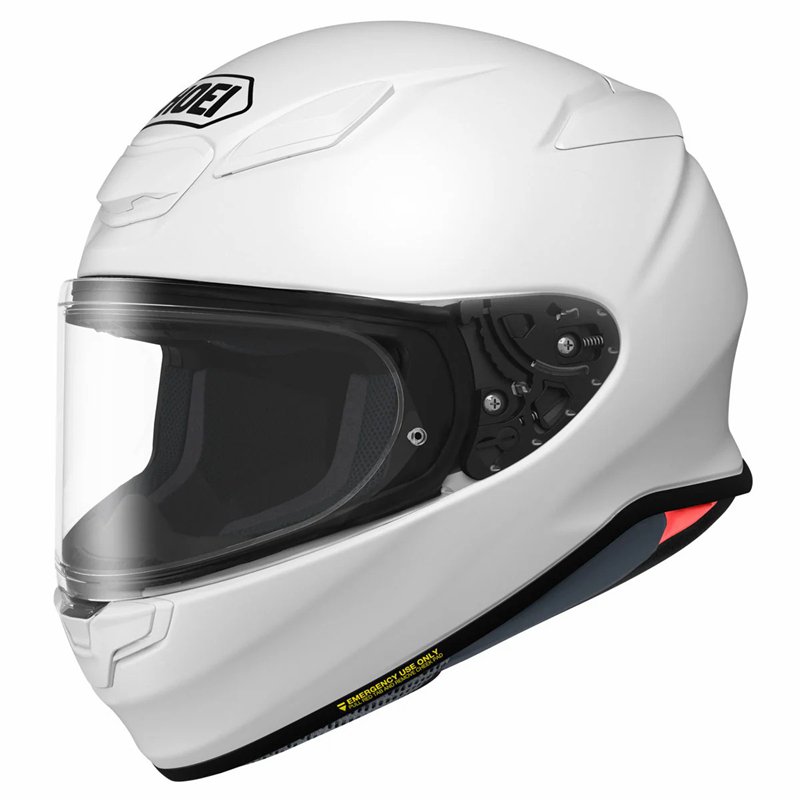
Shoei RF-1400 motorcycle helmet
Motorcycle helmets are primarily designed for on-road use. Safety protection is also its most important feature and function.
Also, they have some designs on aerodynamic efficiency and noise reduction, etc.
Most motorcycle helmets offer features including:
- Safety Certifications: DOT, ECE, or Snell certified motorcycle helmets are the top choice. They have safer design and production standards.
- Impact-Resistant Shell: They are made from materials like polycarbonate, fiberglass, or carbon fiber. These materials have higher impact resistance ability and longer durability.
- Ventilation System: There are well-designed vents to keep airflow continuous and reduce heat.
- Comfort Liner: Removable, washable, and moisture-wicking liners bring riders more comfort and hygiene.
- Aerodynamics: Motorcycle helmets' streamlined design can minimize wind resistance and noise.
- Face Shield: Anti-scratch, UV-protected, and sometimes anti-fog shields for clear visibility.
- Weight: Lightweight design to reduce neck strain during long rides.
- Retention System: Secure and adjustable chin straps to keep the helmet in place.
- Bluetooth Compatibility: Built-in or compatible with motorcycle communication systems for connectivity.
- Custom Fit Options: Availability of different sizes and adjustable padding for a snug fit.
ATV Helmet vs Motorcycle Helmet Key Differences
Design and Structure
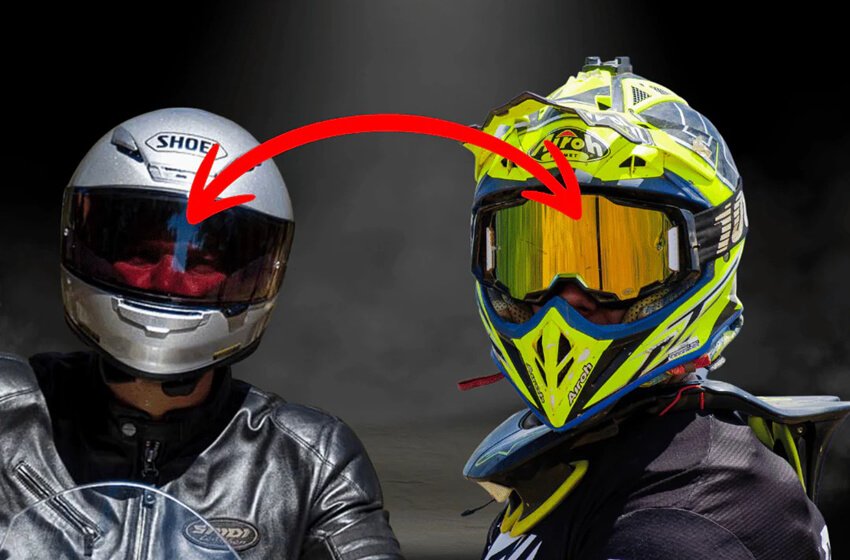
ATV helmet vs motorcycle helmet visor and face shield (Source: RiiRoo)
-
Visor and Face Shield:
-
ATV Helmets: They have larger, extended visors to protect against sun glare and debris. For example, the Fox Racing V1 helmet, which I use during my ATV ride, includes a substantial visor. This helps shield my eyes during intense trail rides.
-
Motorcycle Helmets: They have integrated face shields to protect against wind and road debris. The Shoei RF-1400, for instance, offers a full-face shield with anti-fog technology for clear vision at high speeds.
-
-
Ventilation:
-
ATV Helmets: Designed with multiple vents to keep riders cool during exertion. I also got the chance to try the Bell MX-9 MIPS helmet while riding an ATV with my friends. It includes an advanced ventilation system that allows for significant airflow. This is really crucial when riding in hot conditions.
-
Motorcycle Helmets: Focus on reducing wind noise while maintaining airflow. I have an Arai Signet-X helmet I usually wear. It balances ventilation with noise reduction, so it is an ideal choice for my long highway rides.
-
-
Weight and Material:
-
ATV Helmets: They are often lighter and made from materials like polycarbonate. These materials reduce the weight but still provide flexibility and impact resistance. Here, I recommend the O’Neal Sierra II helmet as an example, which is lightweight. Its 1590g super light weight helps reduce fatigue during off-road adventures.
-
Motorcycle Helmets: Might be slightly heavier due to added features like soundproofing. Still, some top options balance them well. The AGV Pista GP RR uses carbon fiber to provide strength without excessive weight. It perfectly caters to performance riders.
-
Safety Standards
-
DOT (Department of Transportation): Both ATV and motorcycle helmets must meet DOT standards in the US. This is to ensure the riders' basic safety requirements. For example, the HJC CL-17 helmet is DOT-approved, providing peace of mind for riders.
-
Snell or ECE:
-
Motorcycle Helmets: Often seek Snell or ECE certifications for higher impact protection. The Bell Qualifier DLX MIPS is ECE certified, there are also many other ECE helmet choices. They have rigorous testing beyond DOT standards.
-
ATV Helmets: May not always pursue these certifications, focusing instead on off-road conditions. But, some models like the Airoh Aviator 2.3 include ECE certification for added assurance.
-
Purpose and Usage
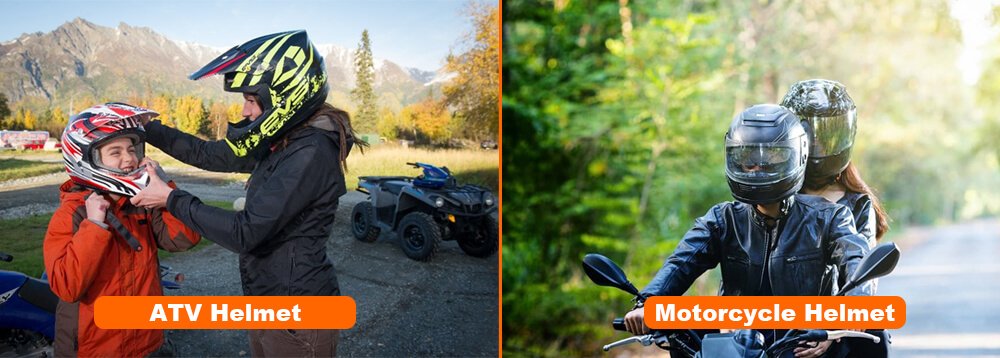
ATV helmet vs motorcycle helmet usage compare
-
ATV Riding: ATV helmets are designed for off-road conditions. They are usually equipped with features that prioritize protection from environmental elements. Helmets like the Thor Sector have reinforced chin bars to handle impacts from tree branches or falls.
-
Motorcycle Riding: Motorcycle helmets focus on on-road use, emphasizing aerodynamics and noise reduction. The Schuberth C4 Pro and some other helmets are crafted for quiet, streamlined travel. They are ideal for touring or commuting.
Comfort and Fit
-
Proper Fit: This is essential for helmet safety and comfort. Helmets should feel snug without pressure points. Brands like Arai and others offer different shell shapes to fit various head forms.
-
Padding and Liners: Most of the liners are removable and washable. This can bring the riders more comfort and hygiene. Some high-end helmets like the Klim F5 helmet feature a moisture-wicking liner. This is also a good way to enhance the comfort during long rides.
-
Weight: A lighter helmet reduces fatigue. The Icon Airflite, known for its lightweight design, is perfect for extended wear without strain.
Visibility and Vision
-
Field of View:
-
ATV Helmets: Provide a wide field of view, crucial for navigating unpredictable terrains. The 6D ATR-2 helmet offers a broad perspective, enhancing peripheral vision.
-
Motorcycle Helmets: They also provide good visibility, but they may focus more on reducing glare and fog. Let's take the Pinlock-ready visor on the Shoei GT-Air II as an example. It helps maintain clarity in various weather conditions.
-
-
Face Shields and Goggles:
-
ATV Helmets: Often paired with goggles for flexibility. Helmets like the Fly Racing Kinetic allow for easy goggle integration.
-
Motorcycle Helmets: Typically include built-in shields. The HJC RPHA 70 ST, for instance, features a retractable sun visor for quick adjustments.
-
How to Choose the Right ATV and Motorcycle Helmet
Purpose and Usage
-
ATV Riding: If you primarily ride off-road, an ATV helmet is preferable. Because its design is tailored for rough terrains and environmental conditions.
-
Motorcycle Riding: For highway and urban riding, a motorcycle helmet is an ideal choice. It has aerodynamic features and comprehensive protection.
Comfort and Fit
-
Proper Fit: Regardless of type, the helmet should fit snugly without being too tight. It should not move around on your head.
-
Padding and Liners: Both helmets offer removable liners for easy cleaning. Choose a helmet with comfortable padding for longer rides.
-
Weight: A lighter helmet can reduce fatigue, especially for long rides. Balance weight against necessary safety features.
Visibility and Vision
-
Field of View: ATV helmets often provide a wider field of view. This is an important factor in off-road scenarios.
-
Face Shields and Goggles: Consider whether you prefer a full face shield or the flexibility of goggles. The goggles are commonly used with ATV helmets.
Additional Features
-
Communication Systems: Motorcycle helmets come with built-in Bluetooth systems for communication and music. However, this feature is less common in ATV helmets.
-
Camera Mounts: If you want to record your rides, look for helmets that offer mounts for GoPros or other cameras. Also, there are helmet Bluetooth headset with camera, like the Fodsports FX30C Pro.
Shop ATV Helmet Intercoms from Fodsports Shop Motorcycle Helmet Intercoms from Fodsports
Maintenance and Care
-
Regular Inspection: Check for cracks, dents, or any damage after every ride.
-
Cleaning: Use mild soap and water to clean the exterior. Liners can often be removed and machine-washed.
-
Storage: Store helmets in a cool, dry place away from direct sunlight. This is a good way to prevent the material of the helmet from degradation.
Cost Considerations
-
Budget: Helmets range from budget-friendly options to high-end models. Higher price often means better materials and additional features. If you have a low budget, then you can consider those with a lower price. But always ensure the helmet meets safety standards.
-
Longevity: Investing in a quality helmet can ensure it lasts longer and provides better protection over time.
Conclusion
The ATV helmet and motorcycle helmet are different. Choosing between them depends largely on your primary riding environment and personal preferences.
Both types of helmets are engineered to provide essential protection. But their designs reflect the different demands of road versus off-road riding.
When selecting a helmet, prioritize safety, comfort, and the specific needs of your riding style.
Remember, the best helmet is one that fits well, meets safety standards, and suits your riding conditions.
By understanding these differences and considerations, you can make an informed choice. The right helmet will enhance your safety and enjoyment on the road or trail.

Motorcycle mechanic, writer. Interested in motorcycle gear for years. Like to stay up to date with the newest products and techniques of the motorcycle.
Fodsports FX-S released now! In the world of motorcycle communication systems, Fodsports has become a trusted name. This intercom brand is known for producing high-quality yet affordable helmet intercoms. Their latest release, the Fodsports FX-S, is no exception. The Fodsports FX-S is tailored for riders who need a dependable and budget-friendly 2-way intercom system. It […]
How do you communicate while snowboarding? Which is the best way to communicate with others while on the snowboard slope? Snowboarding is an exhilarating sport that combines the thrill of speed with the beauty of nature. But, maintaining communication with friends or partners on the slopes is hard. This is also a challenge to many […]
Introduction to motorcycle helmet audio systems As a passionate rider, I understand the thrill of hitting the open road with the wind in your face and the roar of the engine beneath you. However, there's one aspect that can take your riding experience to new heights. That is the ability to enjoy your favorite tunes […]
There are more best motorcycle to motorcycle communication systems than ever in 2025. Riders can seek them much more easily than before. Nowadays, modern intercoms offer crystal-clear audio, long-range capabilities, and seamless integration with helmets. These devices enable riders to stay in touch with their group, listen to music, take calls, and get GPS directions. […]
Do you know what mesh motorcycle communication is? How to choose the best mesh intercom for your motorcycle intercom? Introduction Riding a motorcycle is an exhilarating experience, but communication can be a challenge. In this article, I will lead you to enter the mesh motorcycle communication systems. These innovative technologies allow riders to stay connected […]

